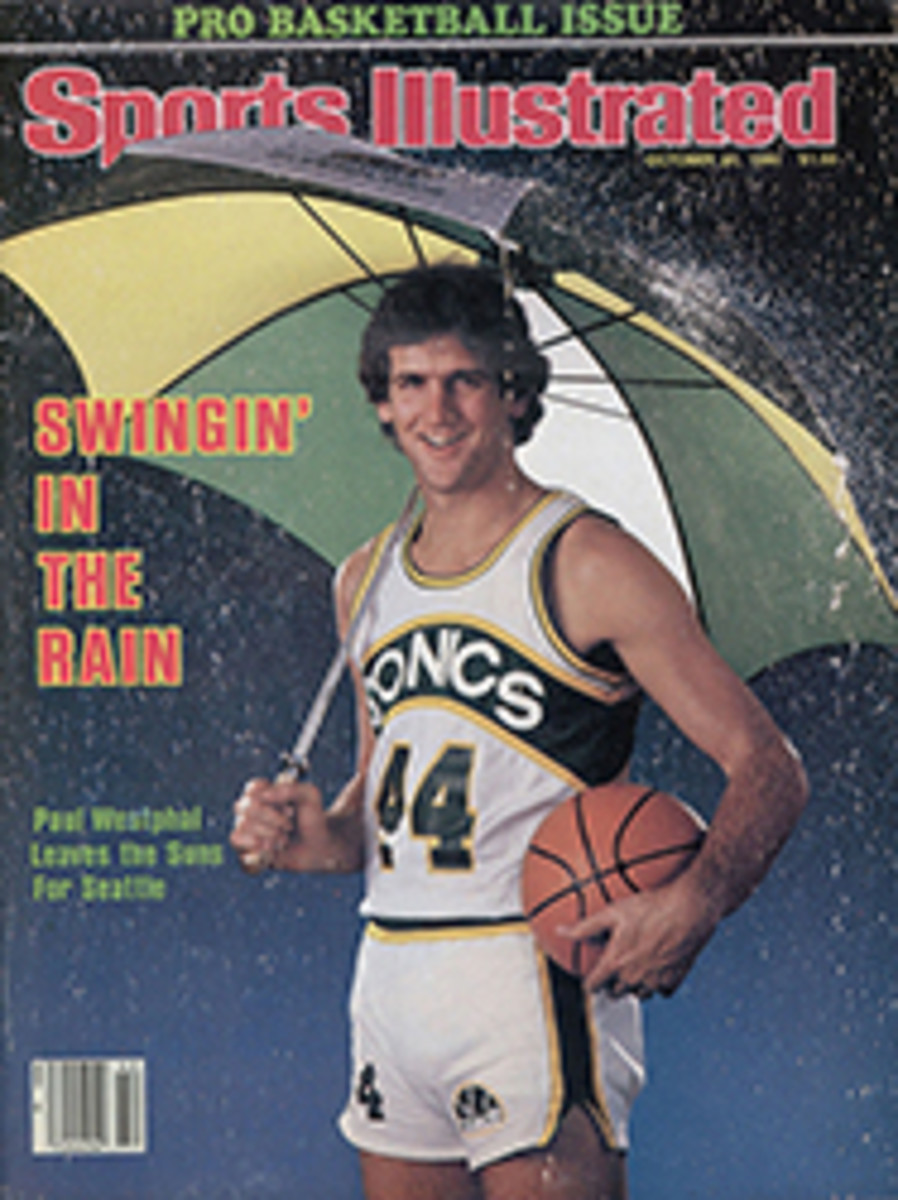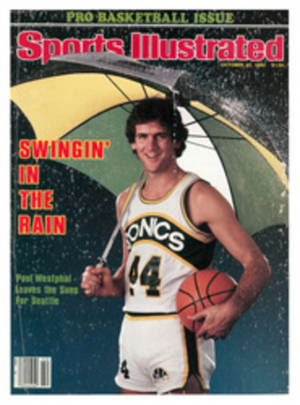
LETTER FROM THE PUBLISHER
If the name Johnson seems to be appearing all over SI this week, there's a simple explanation. This is our annual pro basketball issue, and there happen to be Johnsons all over the NBA—enough to stock a new franchise for, say, Johnson City, Tenn. There are Marques and Mickey, George and George, Dennis, Eddie, John, Vinnie, Reggie, Lee, Clemon and Magic. There's even a coach, Phil, an assistant with the Bulls.
As it happens, we've got a couple of Johnsons of our own. The NBA reporter among them is Roy, and his byline appears herein not once, but three times—on the story celebrating the game's best shot-blockers (page 40), on the Pacific Division scouting report (page 50), and on the status report of the Women's Professional Basketball League (page 54). Johnson also helped out with the cover photograph of Paul Westphal, by finding a firm, the Shedrain Umbrella Company of Portland, Ore., that would make the special umbrella Westphal is holding.
Roy obviously is heavily into basketball these days, though it was not his chosen game as a youngster growing up in Tulsa. "I haven't played organized basketball since the seventh grade," says Johnson, 24. "In sixth grade I was the second-biggest kid in school. In seventh I was the second-smallest. So I switched to soccer."
Basketball was not particularly big in Oklahoma, anyway. Most of Roy's exposure to it came from stories his Uncle Marques—not a real uncle, but his father's closest friend—used to tell about playing with some team called the Fabulous Magicians. "It wasn't until I was in high school that I found out he was famous," says Johnson. Famous, indeed. Uncle Marques was, and still is, Marques Haynes, former Magician and Globetrotter, a/k/a "The World's Greatest Dribbler."
Johnson's attention turned early to journalism. He was a straight-A student until a fifth-grade teacher stunned him with his first B. The teacher was his mother. Later on, when he became editor of his junior-high and high school newspapers, "She used to correct all my stories," he says. "After they appeared." When he got to Stanford, Johnson's newspaper and radio work went uncriticized, at least by his mother.
Johnson came to New York and SI after graduation in 1978, and by March 1979 he was our pro basketball reporter, helping to cover the playoffs and reporting on and checking many other stories.
Along the way he has learned to stand up to even the biggest players. For example, says Johnson, "When Darryl Dawkins was head-faking our photographers last winter, I called him up and told him—nicely—that he'd better cooperate." And Dawkins did. "The hardest thing for me to learn," Johnson says, "is how to separate the baloney from the important stuff. I want athletes to know that I'm not just another reporter they can throw their practiced lines at."
As he moves around the league, Johnson is sometimes mistaken for a player himself, even though he's only 5'6"—"5'7" on a good day," he says. "Once a kid absolutely insisted I was Lloyd Free. So finally I just signed Free's name." He could, of course, have just signed "Johnson."
PHOTO
TWO JOHNSONS, SI'S ROY AND NBA'S MARQUES

